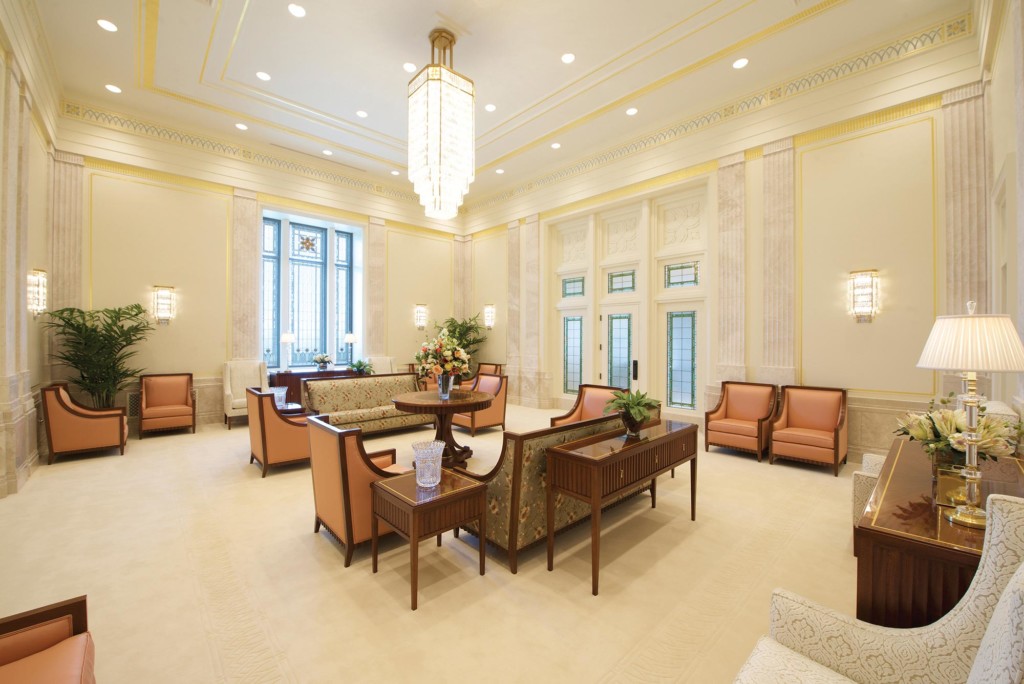The design of the Tucson Arizona Temple is deliberately simple and understated. The form is reminiscent of buildings in the region, but the detail is not overtly “Spanish” or “Spanish Colonial.” The temple has hints of the Art Deco style with subtle steps, recessed planes, and pronounced corner elements. Located in the foothills of Pima County, the temple overlooks the city of Tucson to the south with the Catalina Mountains as a backdrop.
The building is symmetrical and simple in massing and proportion. The exterior is comprised of simply ornamented cast stone panels, bronze colored doors and windows, and art glass. The corners of the building are detailed simply, and the recessed cornice is articulated with a gentle raking texture.
The interior is a simplified traditional design consistent with Moderne and Art Deco styles: subtle steps, chamfers, recesses and simplified traditional elements. Prominent spaces have simple stepped cornices at the ceiling. Finishes are elegant and quiet, focusing on the beauty of the materials. The art glass combines geometric backgrounds with floral patterns based on abstracted desert flowers.
By design, the Tucson Arizona Temple reflects the calm of its desert environment, as well as the quiet peace the temple represents.

Art Deco Design
From the inception of this religious building precast was the material of choice for the exterior cladding. The style of the building is Art Deco which utilizing subtle stepping and textures which precast does well. The motifs expressed on the interior into wood and stone are expressed on the exterior in precast and art glass. The precast has a dynamic and changing appearance as the desert sun moves and casts shadows throughout the day on the ornament and raking.
Subtle Elegance
Finishes in the temple are elegant yet restrained, focusing on the inherent beauty of the materials. Stone tile is used for many of the floors in the temple, transitioning to carpet. The entry lobby and the ordinance spaces have a wainscot, made of wood or stone which begins with less detail and transitions to more articulation.


Simple and Restrained
The temple interior is also simple and restrained. Elements of the exterior are expressed again on the interior, placing emphasis on the temple functions and significant patron areas. Design elements are consistent with Moderne and Art Deco styles. These elements include subtle steps, thin lines, chamfered edges, recesses, and other simplified traditional elements.

Geometric Abstractions
Prominent spaces have simple stepped cornices and the ceilings are quiet and planar, with subtle steps accented with simple painted line work. The art glass throughout the temple combines geometric backgrounds with floral patterns based on abstracted desert flowers.

Prominent Dome
The signature form of the temple is a prominent dome, rather than a spire. The dome was deliberately proportioned similar to the Duomo in Florence, Italy. The dome is octagonal and ribbed, with a simple lantern and pedestal on top. Zinc shingles were used in place of ceramic tiles. The base of the dome sits on an octagonal drum detailed similar to the building below.
